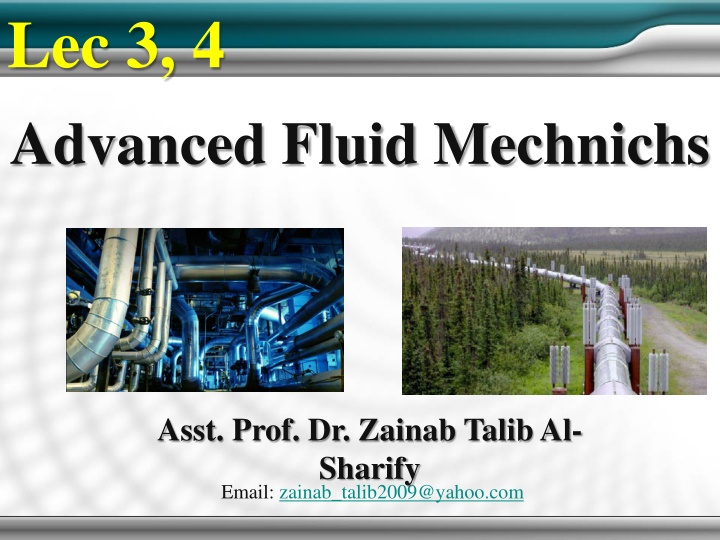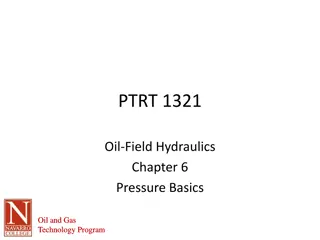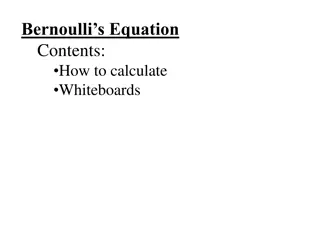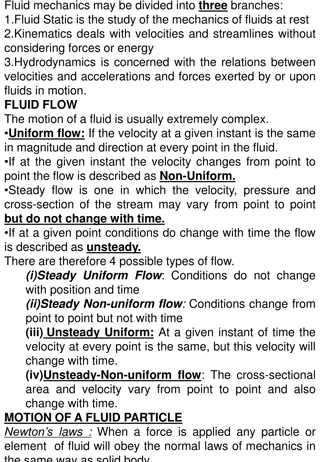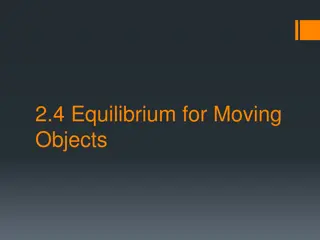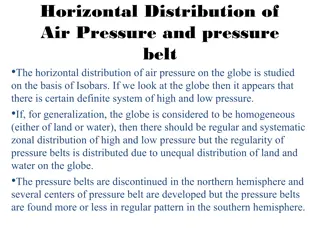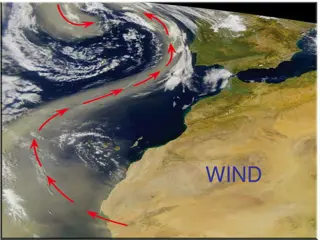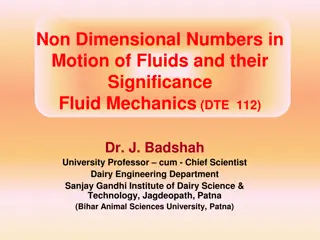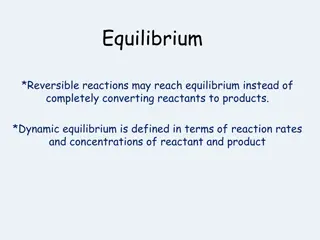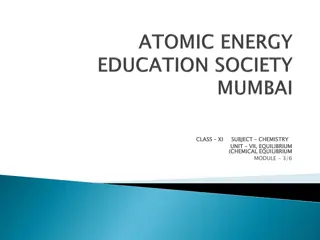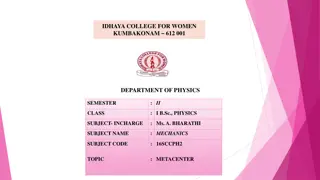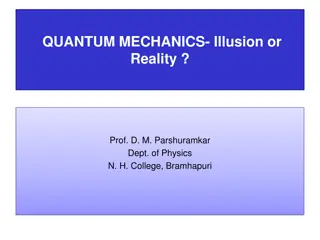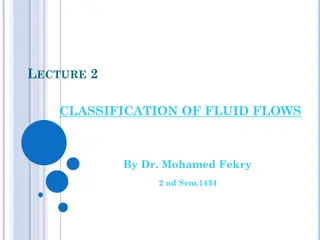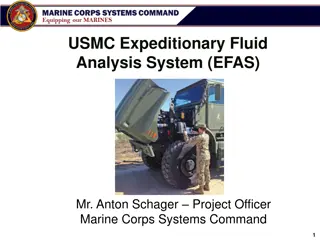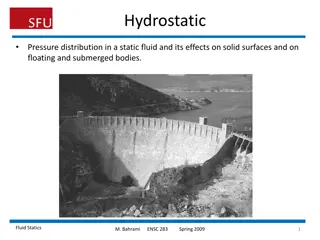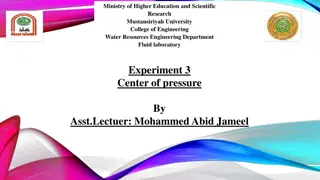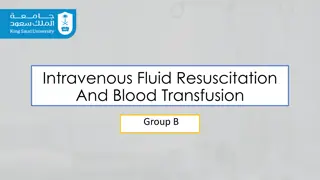Pressure Gradient and Equilibrium in Fluid Mechanics
A detailed overview of pressure distribution, pressure force, equilibrium of fluid elements, and pressure gradients in fluids. Learn about the fundamental concepts essential for understanding fluid behavior and forces acting within a fluid system.
Download Presentation

Please find below an Image/Link to download the presentation.
The content on the website is provided AS IS for your information and personal use only. It may not be sold, licensed, or shared on other websites without obtaining consent from the author.If you encounter any issues during the download, it is possible that the publisher has removed the file from their server.
You are allowed to download the files provided on this website for personal or commercial use, subject to the condition that they are used lawfully. All files are the property of their respective owners.
The content on the website is provided AS IS for your information and personal use only. It may not be sold, licensed, or shared on other websites without obtaining consent from the author.
E N D
Presentation Transcript
Lec 3, 4 Advanced Fluid Mechnichs Asst. Prof. Dr. Zainab Talib Al- Sharify Email: zainab_talib2009@yahoo.com
Summary Lecture 3 Chapter 2 Pressure Distribution in a Fluid Pressure and Pressure Gradient, Pressure Force on a fluid Element Equilibrium of a Fluid Element Hydrostatic Pressure Distributions, Hydrostatic Pressure in Liquids, Hydrostatic Pressure in Gases Application to Manometry Hydrostatic Forces on Plane Surfaces Buoyancy and Stability Lecture 4 Chapter 3 Integral Relations for a Control Volume Basic Physical Laws of Fluid Mechanics, Systems versus Control Volumes, Volume and Mass Rate of Flow The Reynolds Transport Theorem, One-Dimensional Fixed Control Volume, Arbitrary Fixed Control Volume, Control Volume Moving at Constant Velocity, Control Volume of Constant Shape but Variable Velocity, One-Dimensional Flux-Term Approximations
Pressure and Pressure Gradient, Pressure Force on a fluid Element A pressure gradient is the rate of change (gradient) of atmospheric (barometric) pressure with regard to horizontal distance at a given point in time. The value is usually expressed in mb per 100 mi. The pressure gradient is a force (P) that acts in a direction from higher toward lower pressure. In the atmosphere the pressure gradient force is directed perpendicular to the isobaric surfaces. It can be divided into two components, one that points vertically upward (Pv) and one that is horizontal (PH). The vertical component is balanced by gravity and is very small. However, small deviations are very important in the cloud formation process. The horizontal component can produce relatively large accelerations. The size of PH depends on the rate of change of pressure in the horizontal direction. Where the isobars are close together, the horizontal pressure gradient force is large; where the isobars are far apart, it is weak. A large (steep) gradient produces strong winds.
a fluid at rest cannot support shear stress and thus Mohrs circle reduces to a point. Hence the normal stress on any plane through a fluid element at rest is equal to a unique value called the fluid pressure p, taken positive for compression by common convention. hydrostatic moving fluid there will be viscous stresses, both shear and normal Thus it is not the pressure but the pressure gradient causing a net force which must be balanced by gravity or acceleration or some other effect in the fluid.
Equilibrium of a Fluid Element The pressure gradient is a surface force which acts on the sides of the element. the net viscous force where B is a short notation for the vector sum on the right-hand side. If V and a = dV/dt are known functions of space and time and the density and viscosity are known, we can solve Eq. (2.13) for p(x, y, z, t) by direct integration. By components, Eq. (2.13)is equivalent to three simultaneous first-order differential equations
Examining Eq. (2.13), we can single out at least four special cases: 1.Flow at rest or at constant velocity: The acceleration and viscous terms vanishidentically, and p depends only upon gravity and density. This is the hydrostatic condition. See Sec. 2.3 . 2.Rigid-body translation and rotation: The viscous term vanishes identically,and p depends only upon the term (g -a). See Sec. 2.9. 3.Irrotational motion (xV =0): The viscous term vanishes identically, and an exact integral called Bernoulli s equation can be found for the pressure distribution. See Sec. 4.9. 4.Arbitrary viscous motion: Nothing helpful happens, no general rules apply, butstill the integration is quite straightforward. See Sec. 6.4. Let us consider cases 1 and 2 here.
hydrostatic problem We state the following conclusions about a hydrostatic condition: Pressure in a continuously distributed uniform static fluid varies only with vertical distance and is independent of the shape of the container. The pressure is the same at all points on a given horizontal plane in the fluid. The pressure increases withdepth in the fluid.
Dr. Zainab Talib Al-Sharify Thank you!
